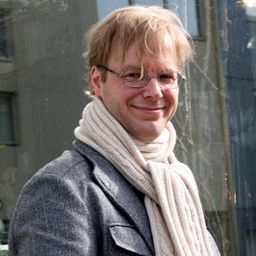14.30 Preservation as Salvation: Safeguarding the Church of Sweden
My Session Status
This paper will investigate how claims to protect religious rites as intangible heritage have been received within heritage and religious institutions. Based on a Swedish case study the aim is to analyze theoretical aspects of the relationship between heritage and religious claims on church heritage, and to relate this to a wider international perspective.
Following its separation from the state in 2000, the Church of Sweden has to some extent reinvented itself as a cultural heritage institution. No longer with its own dedicated item on the state budget, the Church of Sweden has instead become a major beneficiary of the state’s efforts to conserve cultural heritage. As a result, the Church is now one of the most important employers of heritage professionals. The Church has not remained content merely to protect church buildings, however, when the Swedish state ratified UNESCO’s Convention for the Safeguarding of the Intangible Cultural Heritage, the Church of Sweden claimed its rightful place in the convention’s implementation, arguing that church rites are central to the country’s intangible heritage, notwithstanding the convention’s exclusion of religious practices.
In this paper, we will ask what this move means; or, to cite the congress theme, what heritage changes in this case: what difference does it make whether church buildings and church rites are approached through religious or heritage regimes? If safeguarding cultural heritage may be characterized as a pastoral relationship, how may we compare and contrast the practices of social actors who go to church and take part in its rites to pray for salvation with the practices of those who go to church to take part in rites to ensure their safeguarding?
If, following Barbara Kirshenblatt-Gimblett (1998), cultural heritage may be characterized as a mode of cultural production in the present that gives "the obsolete, the mistaken, the outmoded, the dead, and the defunct” a second life as representation, based on a new economic rationale, then it seems not far-fetched to ask if and how the acute heritage turn taken by the Church of Sweden in recent years affects the viability and rationale of its religious practices? And if, following William Cavanaugh (2011), we are justified in seeing in the rise of cultural heritage a “migration of the holy” in contemporary societies from the religious sphere to the patrimonial sphere, then is the “resanctification” of religious buildings and rites as heritage perhaps the logical culmination of this process?
The claim from the Church of Sweden to include church rites in the national process was signed by the archbishop. This way of looking at the church’s heritage has not been uncontroversial, however; the paper will map out different positions. Some clergy are heritage-sceptics, to the extent even of suggesting that all redundant churches should be demolished. They focus on the contemporary and religious mission of the church, perceiving heritage as obsolete and expendable.
This strict separation of secular and religious use may be questioned with reference, for example, to Tim Edensor’s reasoning (2008) about the multiple experiences of the pilgrim in visiting religious space, or to Danièle Hervieu-Léger’s theory of religion as a chain of memory (2000). Studies also show that church visitors cannot separate different aims for their visit, and that heritage use and religious experience can and do overlap. Indeed, the notion of heritage as a modern construct opposed to religion, or of religion as devoid of deliberate uses of the past, can itself be seen as a modern construct. In conclusion, we need to address the question of how heritage and religion interact, and what changes when they do.

